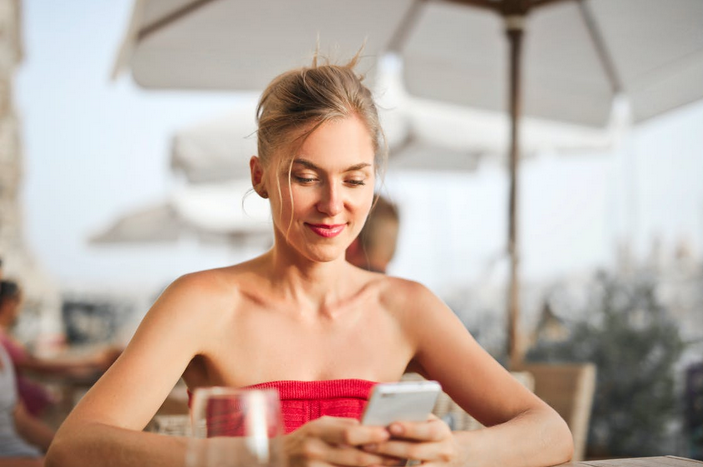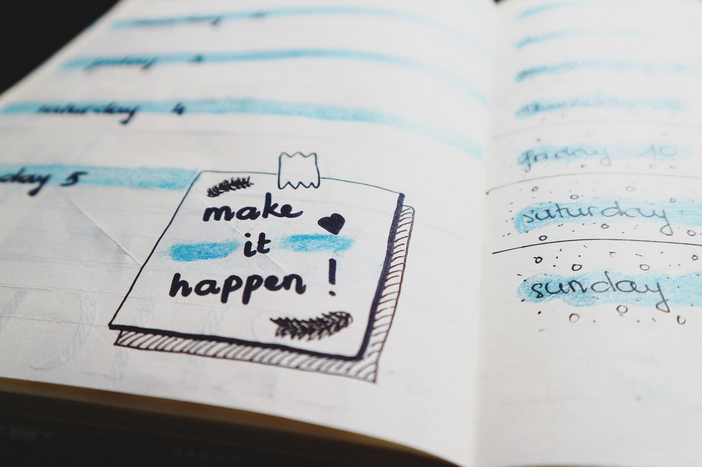In this post: The five travel stages and the best ways to reach, attract and convert prospects throughout the travel purchase journey.
Travel stages: The travel customer’s purchase journey
This shouldn’t come as a surprise but a person’s travel purchase journey isn’t limited to simply conducting research and then booking the trip. In fact it involves five distinct stages—each essential to travel marketers.

Stage 1: Dream
Whether it’s imagining yourself island hopping in South East Asia or exploring the cobblestone streets of European favourites, every vacation begins with a daydream—a desire to get away.
The dreaming stage is when people first start thinking about a possible trip. This early on, some people may not even have decided on a destination yet.
Instead, your potential customers are exploring their options – destinations, ideas – and are not bound to any specific plans. This is when they want and need to be inspired!
At this stage of the travel purchase journey:
- 82% haven’t decided on an accommodation provider yet;
- 78% of leisure travelers are undecided about which airline they will travel with.
The good news for travel marketers? Sixty-seven percent (67%) of travelers said they are more likely to book with a travel brand that provides relevant information for the destinations they’re interested in.
You might also like: Why your brand needs to appear in users’ search results
How to market to prospects in the dreaming stage of the travel purchase journey
Whether you’re marketing an airline, hotel, or tour operator, you want to get your travel brand in front of potential customers from the very beginning. That is, as early as the dreaming stage.
The goal is to encourage dreamers to progress from dreaming to actually planning—and including your brand in those plans. That’s why you have to be visible at crucial moments. And why your content has to be of value, relevant, and useful.
How can you be useful? Give prospects what they’re looking for at this point:
- ideas
- inspiration
- answers to their most common and pertinent questions
Content could include what your destination can offer in terms of sights and attractions; activities; what to expect during different times of the year, and so on.
You might also like: How to use search intent in copywriting—and increase your conversion rate!
During all this, make sure you somehow tie in your brand. This could be by highlighting how your brand is the solution to a related problem e.g. finding comfortable green accommodation.
At this stage, you could use social media, your business blog, and videos on YouTube to engage your target audience.
You might also like: Business blogging: How your small business benefits
Takeaway: If you want to be in the game – that is capture the attention of, and eventually win over more customers – then you need to be present early on in the travel purchase journey. That is when prospects are still only dreaming about their next trip!
Did you know?
Research has found that photos of a destination and travel-related videos play a very important role in the dreaming stage of the travel purchase journey. In fact, 60% of leisure travelers will narrow down their choices of destinations, brands, and activities based on video content encountered during stage one.

Stage 2: Plan
By this point, people have decided on a destination. They know where they want to go and now it’s all about putting the trip together: finding the best flight, the right place to stay, arranging activities or transfers, and so on.
Prospects tend to visit many websites during this stage and it’s highly likely they’ll be switching devices along the way. They may start out on their tablet, shift to a smartphone and then conduct further research on their PCs.
All this to say you definitely want your pages and content to be optimized for mobile devices; failing to do so could mean losing out on a large chunk of potential clients who’ll simply click back if your page doesn’t load nicely.
Did you know?
According to a Google study, over 40% of travelers go back and forth between stage one and two of the travel purchase journey. In other words they will focus on and collate the details for one destination but then go back to reconsider their other options again.
Also worth knowing: TripAdvisor found that when it comes to selecting their destination, people use a mix of online and offline sources with 73% going online and 62% looking offline. But when it comes to choosing accommodation, online channels dominate.
It’s also worth noting that while younger travelers (ages 18 – 34) begin their research by comparing destinations, those 55+ first decide on a specific destination.
Also, 74% of travelers begin by researching and choosing their destination but of those that don’t start with a destination:
- 41% will look at / book flights
- 30% will look at / book accommodation
- 12% simply went ahead and traveled to the their destination
This could be attributed to great deals or special air fares that are too good to miss out on.
You might also like: Should your hotel have a blog?
How to market to prospects in the planning stage of the travel purchase journey
With prospects sitting down to finalize their plans, they’ll be searching for information like:
- Prices
- Travel duration (“travel time to [destination]”)
- Travel schedules and connections
- Hotel details (availability, cost, photos, reviews)
- What they can do at their chosen destination.
At this point, their online searches will be more focused. For example: “hotels with infinity pool in [destination]” or “cheap flights to [destination]”. They’ll obviously also be presented with many alternatives to choose from. Your goal is to get travelers to add your travel brand to their list of best options.
The only way you can be in the running for consideration is if your pages are visible exactly when people conduct more in-depth and specific travel research. In other words it should be easy for your ideal customers to find you.
Tips for travel marketers during stage two:
- Ensure your web copy is optimized for search engines (so that you improve your chances of ranking higher and actually getting found);
- Make use of storytelling in your marketing materials;
- List your business on relevant platforms and websites (e.g. Google Maps).
You might also like: The importance of storytelling for hotels
Takeaway: You can’t be included in a traveler’s plans if you don’t show up when they need you. Grow your reach and captivate your ideal audience to increase your chances of securing more bookings.
Stage 3: Book
At last, it’s time to book and make the trip official—prospects are finally ready to commit. Of course, this only happens once they are happy with all the research they’ve done and confident enough to finalize their plans, that is book their tickets and accommodation.
How to market to prospects in the booking stage of the travel purchase journey
You’ve worked so hard – and invested significant resources – to get people to this stage. You don’t want to mess it up by failing at the 11th hour.
By now your marketing should be designed to encourage the person to follow through with the desired action of booking—and prevent any kind of post-purchase regret that could result in cancellation.
You would use:
- Targeted (and segmented) landing pages to drive the conversion;
- Make sure that your website and more specifically the booking system is easy to understand, navigate and use;
- Strong branding to drive home your marketing message as it relates to the customer;
- Suitable and relevant keywords;
- Carefully crafted e-mail communications to reassure prospects that they made the right choice in choosing you.
Stage 4: Experience
By stage 4, the trip is formally underway. Travelers have taken their flights, checked in to your property, or embarked on their tour with your company. Is this the end of the marketing road? Sorry, but not quite yet.
Your marketing efforts don’t end just because you’ve landed the reservation. In fact, now more than ever, you still need to deliver and cater to traveler’s needs. Because now it’s all about the in-person, face-to-face and personal experience with your travel brand.
We’re talking about the quality of your staff and customer service, facilities, F&B, and more—the overall real-life experience.
How to market to prospects in the experience stage of the travel purchase journey
When customers have reached stage 4 of the travel purchase journey, your marketing will be geared towards satisfying the customer on the ground; going above-and-beyond expectations.
Your goal is to build your brand, generate positive word-of-mouth (and reviews), and encourage loyalty as well as repeat patronage. You want to be memorable in the good way.
Aside from helpful and charming staff, top quality service, great facilities, and a delightful F&B experience, you must continue to be helpful by providing clients with relevant and useful information to guide them during their stay.
Takeaway: Continuous marketing efforts matter, especially because a whopping 67% of travelers say they are more loyal toward a travel brand that shared information during the trip that helped improve their travel experience. That travel brand should be yours!

Stage 5: Share
By stage 5, travelers have used your service and are ready to talk about their experience. This is an important stage because it impacts how others could potentially view your travel brand.
How to market to prospects in the sharing stage of the travel purchase journey
Keep in mind that happy travelers love to share their experiences with family and friends—both online and offline. But beware: Unhappy customers are just as likely to let the world know what annoyed them or ruined their vacation by leaving negative reviews online. You don’t want that.
Your goal, both during the stay and after the customer has departed, is to make sure your brand is remembered positively and recommended to others.
There are many ways to do this. For example:
- Encourage customers to leave a review on your website or other relevant portals like TripAdvisor or Booking.com;
- Respond to reviews;
- Send out post-stay / post-experience e-mail marketing messages to thank them for their business;
- And like or repost a client’s favourable Instagram / Facebook post.
Takeaway: Keep the conversation going to foster the client / brand relationship and remain top of mind with previous customers.

Post-COVID-19 travel marketing considerations
So, the novel coronavirus happened (and will apparently be around for a while) and we’re all still figuring out how everything’s going to work out in the travel industry.
Obviously there’s a lot of uncertainty on both sides of the travel purchase journey, i.e. for businesses and travelers alike. So how does that uncertainty affect or alter the stages of the travel purchase journey?
As far as I’m concerned, the COVID-19 pandemic affects practically every stage of the travel purchase journey.
Lockdown fatigue and cabin fever may have many of us dreaming to get away but then the realities on the ground keep most of us … well, grounded. At least for now. As for those who’ve made plans for later this year or even for next year, they have new priorities and changed research habits.
What do I mean? Well, part of their research could now include queries as to the safety of a destination (“is it safe to travel to [destination]”), entry and quarantine rules of a destination (“new travel requirements [destination]”), what a specific brand has done to prevent and protect the health and safety of their customers, and so on.
This means travel marketers really need to consider their customers’ short-term worries, needs and inclinations and, as much as reasonably possible, address and accommodate them. Make sure you’re communicating this appropriately, that is at the right time and the right place.
You might also like: Destination marketing: Post-lockdown travel and tourism trends
That aside, another Google study focused on the APAC region looked at what would boost travelers’ confidence but the findings are likely to be universal.
Clearly, cleanliness and safety are a top priority these days. The study found that the following factors would boost confidence in travel:
- No change / cancellation fees
- Free face masks / sanitizers / (disinfectant) wipes
- 25% discount on standard fare
- Enhanced hospital-grade cleaning
Another way to stimulate demand and convince people to take action is to promote discounts, offer flexibility, and implement new sanitation standards.
Did your travel brand have to cut its marketing budget? Given the climate and travel restrictions, it makes sense.
Fortunately, just because you’ve cut down on paid search, digital video, print ads, digital channels and even TV ads doesn’t mean there’s no way to reach customers anymore. You can still count on your business blog, social media channels, and landing pages to get your brand in front of prospects.
Tip: Take this opportunity to refresh your web and landing page copy plus create relevant new blog content suited for the times.
Sources:
» How Micro-Moments Are Reshaping the Travel Customer Journey
» TripBarometer 2016: Traveler Trends & Motivations Global Findings
» The state of travel in APAC: Identifying trends to prepare for the road ahead

